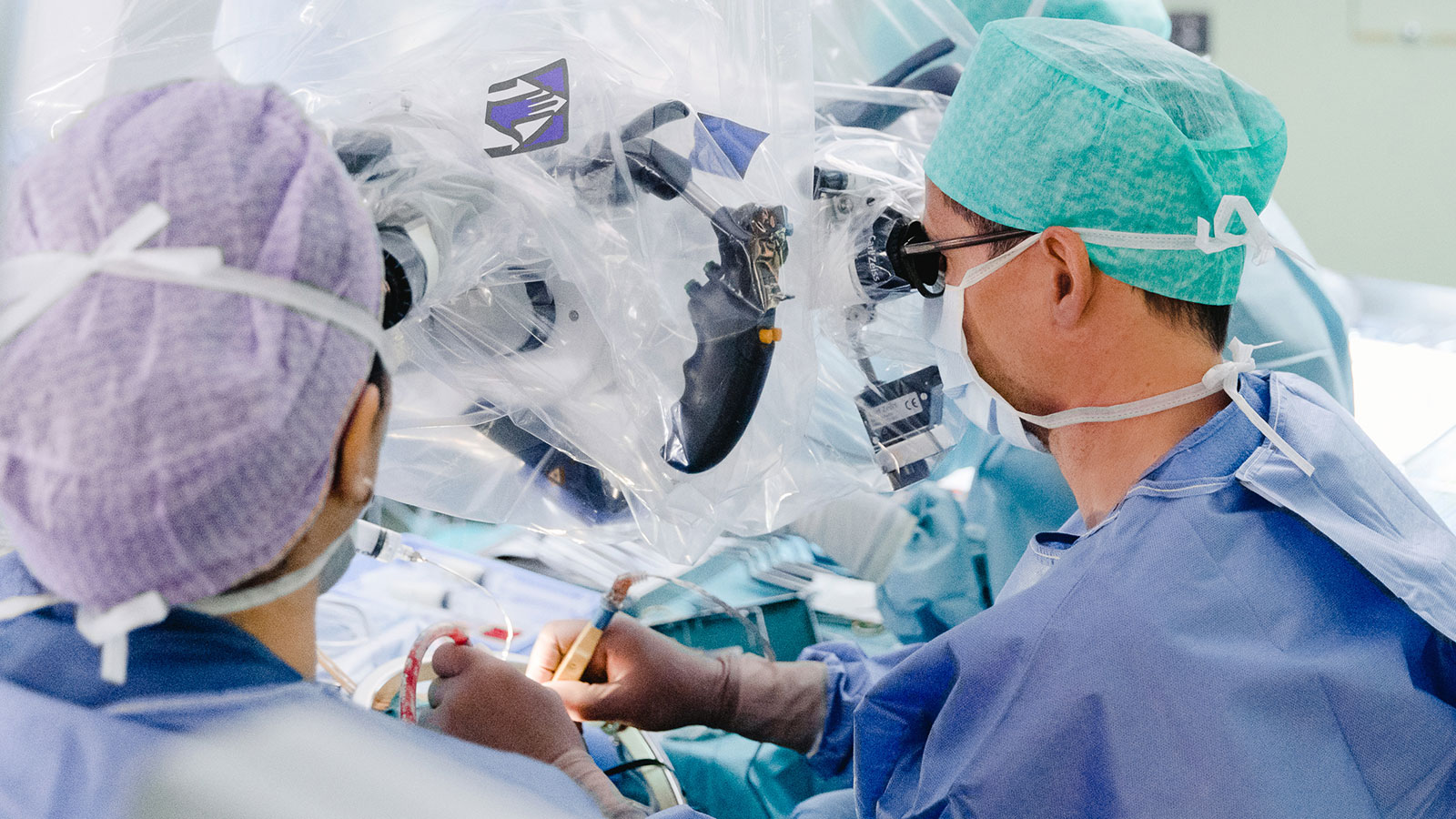Microsurgery is a surgical technique in which surgery is performed under a microscope. It is particularly used in intricate procedures, as even the smallest structures can be made visible. With the help of additional instruments, a modern surgical microscope allows surgical precision in the submillimeter range. Larger tumor surgeries can now also be performed through a small incision, known as keyhole surgery.
Development of microsurgery
Neurosurgery has often been a pioneer in new surgical techniques. The use of microscopes in surgery was introduced in neurosurgery more than 40 years ago. As technology has advanced, the demands on neurosurgeons have grown: tumors should be removed as completely as possible without compromising brain functions or endangering patient safety. To achieve this, the light microscope became a standard feature in the operating rooms of established neurosurgical clinics.
The development of modern binocular surgical microscopes with stereoscopic vision, magnification ranging from 6 to 20 times, and high illumination power has made microsurgery a hallmark of neurosurgery and turned the microscope into one of the most important tools for neurosurgeons.
What are the advantages of microsurgery?
The human eye can differentiate structures as small as 0.1 mm. Modern surgical microscopes can additionally magnify tissue by a factor of 20–40. This high resolution is associated with higher illumination, better visibility, as well as depth of field, contrast, and color representation, which are far superior to normal vision. For the surgeon, the more precise differentiation between healthy and diseased tissue becomes easier.
Under the surgical microscope, modern microinstruments with diamond tips or the finest shapes can also be used to operate on tissue layers and structures in the brain and spine precisely and gently. This is especially important in operations on eloquent and deep-seated brain areas, such as the skull base. Tumors that were previously considered inoperable can now be surgically removed. Particularly for vascular neurosurgery, the new microsurgical instruments enable the performance of the most delicate operations.
Additionally, today's microscopes are equipped with a camera with photo and video functions. This can be used, for example, for live transmission of the operation and thus serve as a teaching and training function for doctors.
Overall, all these new achievements in microsurgery mean greater surgical safety for the patient.

Future outlook
The unstoppable digital and technical advancement in the operating room (OR) area brings numerous innovative technologies that make surgery easier and safer. These include, for example, neuronavigation, 5-ALA fluorescence, or the use of augmented reality (AR). Augmented reality is a focus of research at our clinic. The goal is the complete integration of Augmented Reality into intraoperative navigation.
